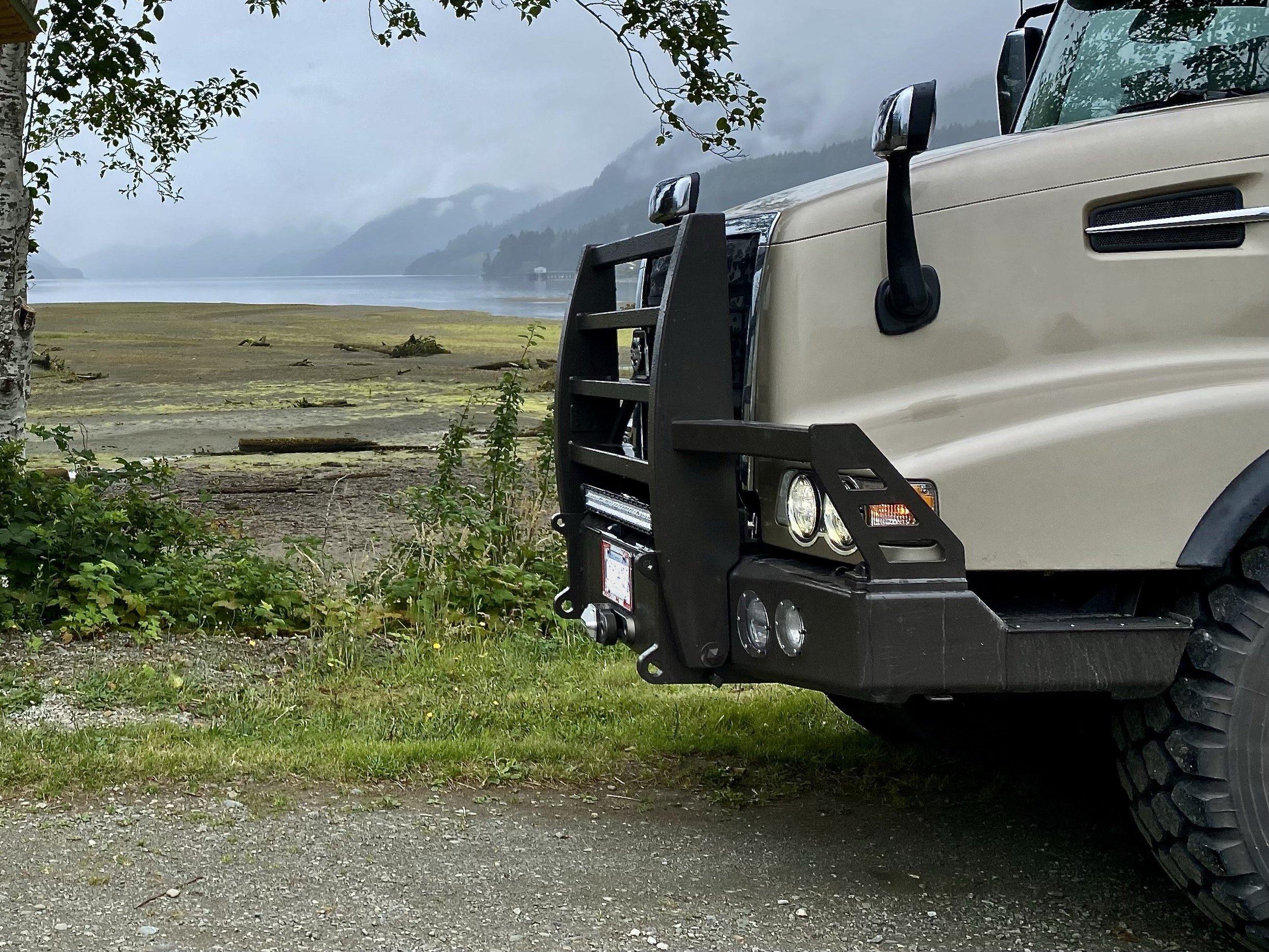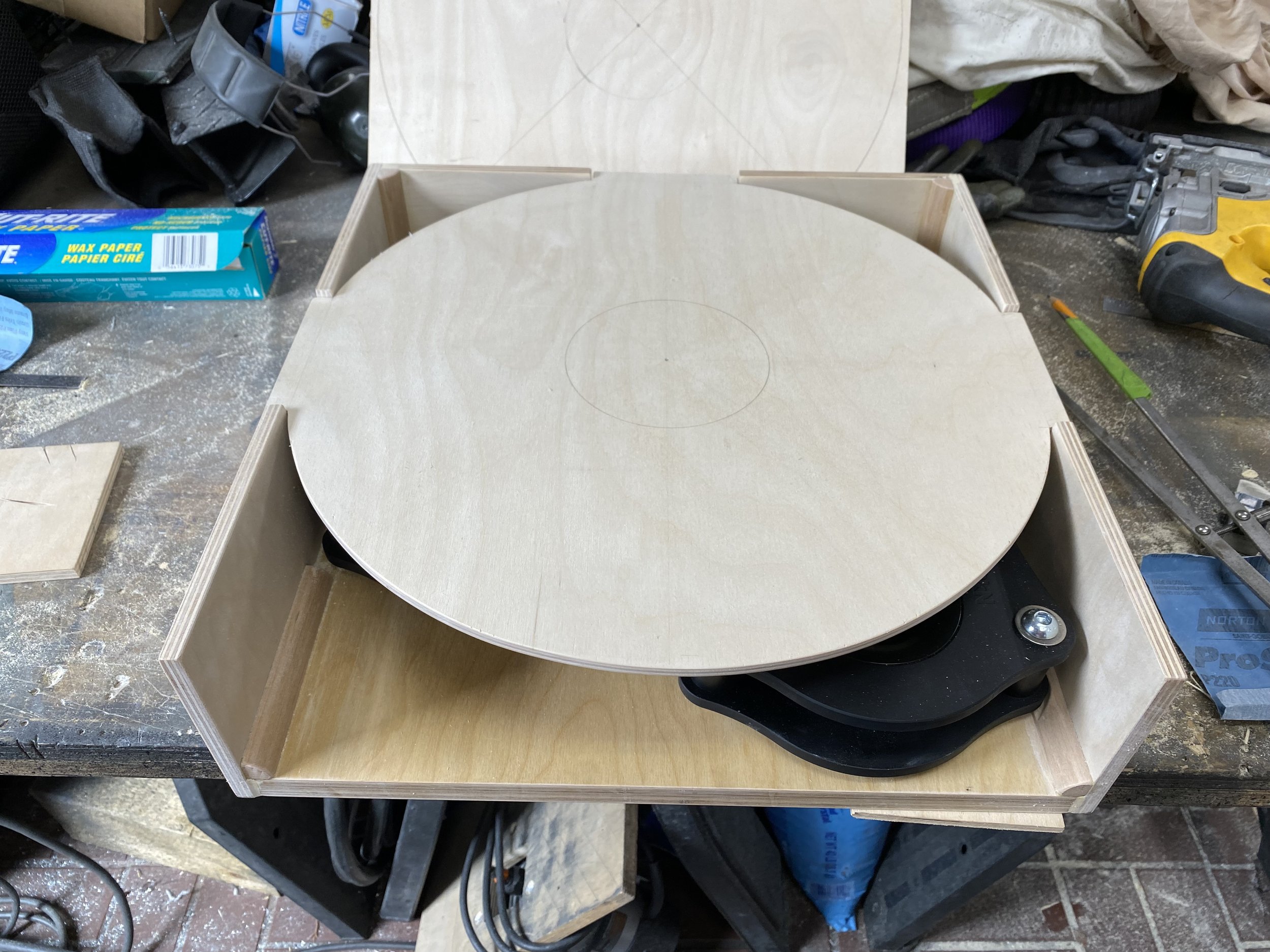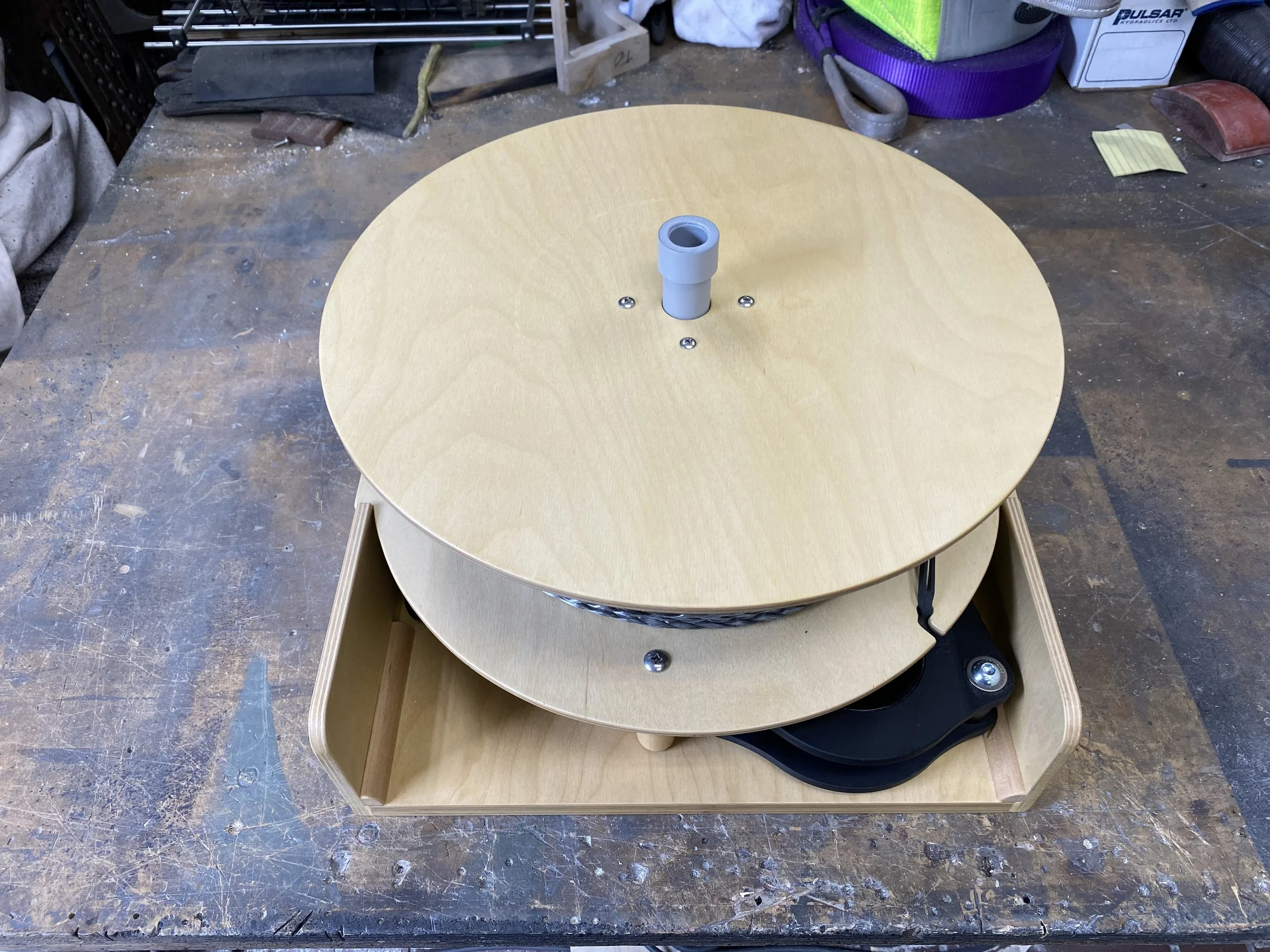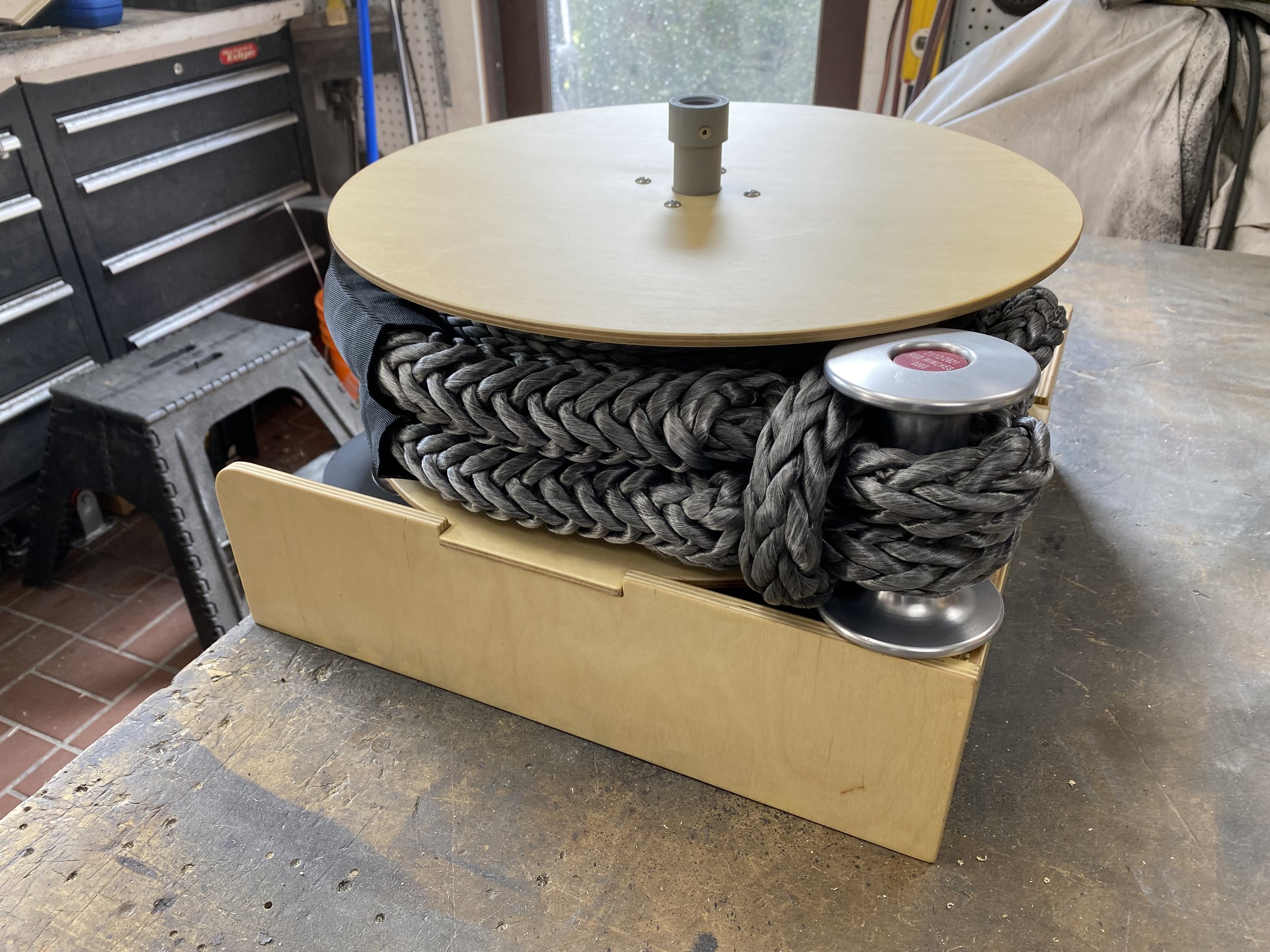Fiddle Block Heavy Vehicle Recovery Kit
Moving A 20 Tonne Truck With A 12.5 Tonne Winch
A Mercedes Zetros 6x6 with a large hydraulic winch sticking out several feet in front of the bumper.
With most heavy trucks such as ours, it’s virtually impossible to have a winch installed that is powerful enough to self-recover the vehicle if it is fully bogged. There are winches that have such power, but they are hydraulically operated, and enormous in size. If they can’t be mounted remotely under the truck on its frame, then the bumper mounted units stick several feet out in front of the bumper and weigh a ton. Their cost is also in line with their size, with a price on some that can reach $40,000.00. In our case, we had neither the space, the hydraulic ability (our PTO is used for our hydraulic front drive axle), or desire to spend this much money on a piece of equipment that would be so seldom used.
Instead we opted for the most powerful 12 volt electric winch we could find, a Sherpa 25,000 pound winch from Australia, and planned for some sort of force multiplier (discovered at Red-Winches.com) that would be able to shift our truck if the need arose. See our front bumper build and winch choice here.
Unfortunately, we didn’t know of Red Winches at the time we were looking for a winch, as they make units that really are a work of art when compared to others on the market. The downside that probably would have steered us elsewhere, though, is their power. The largest one they make is is 16,500 pound capacity. Mind you, with a force multiplier of 5:1 this would have given the Red Winches winch a capacity to move 82,500 pounds. Almost twice the weight of our truck. Of course, that power, like all winches, is calculated on the first rope layer on the winch drum. The more layers, the less the power. Something that must be considered when selecting a winch, and the length of the winch line. A shorter winch line means you can access that first layer of line on the winch drum sooner when deploying the line.
A Solution Presents Itself
The very impressive 50 tonne FM-50 fiddle block kit.
After some time looking for a solution to our force multiplying need, a YouTube video on winching led us to a company in the United Kingdom called Red Winches, who as mentioned above, not only manufacture high quality winches, but other recovery gear as well. Among the various hard and soft recovery aids is a group of force multiplying products. They include snatch rings that range from 5 tonne to 50 tonne capacity, and a group of 5:1 force multiplying fiddle block kits in three sizes. A 12 ton kit, a 24 ton kit, and their behemoth kit with a rating of 50 tonnes.
Now for those non-nautical people out there, a fiddle block is a uniquely shaped “block and tackle” used mostly on sail boats for manipulating the boom. What makes it superior to a standard block and tackle style of force multiplier is that all of the forces exerted within the device are in the same linear plane, and this means there is no off-centre loading that can twist the device. This is of particular importance when talking about many tons of force, since off-centre forces of this magnitude can cause dangerous side loading that can result in equipment failure and serious injury to the operator.
The other problem with a conventional block and tackle is it’s bulk. Unlike the fiddle blocks which are flat, the block and tackle is bulkier in shape and therefore uses more room for storage. Add to that the problem of the rope. The geometry in a conventional block and tackle is such that most often the rope used in it is left threaded through all the sheaves. If the blocks aren’t pulled tightly together prior to storage, a simple roll or twist in one of the blocks can create a tangled mess that’s painfully hard to sort out.
The fiddle block, on the other hand, is almost never stored with the rope threaded in place since it’s so easy to remove and store separately. This also means that because the rope isn’t considered a permanent part of the fiddle block assembly, it can be used for other purposes. So we have a more versatile system.
Red Winches instruction guide for fiddle block use, and load advisories.
The other advantage of the fiddle block is that it gives one a number of different force multipliers using the same equipment. By altering the manner by which the rope is treaded though the sheaves, you can have a 5:1, 4:1, 3:1 or 2:1 multiplier. That’s something that is quite impossible with a conventional block and tackle because of the off-centre loading it creates when some of the sheaves are not used.
The Gear We Chose, And How We’ll Store It
Left to Right - 2 @ 50T soft shackles, 1 pair 50T fiddle blocks, 45 meters of 1/2” winch rope with soft loop each end for blocks (13,970kg/30,800Lbs MBS), 2 @ 4 meter long 50T tow/tree straps.
After a few discussions back and forth with Red Winches, we decided upon the right equipment for our situation and placed the order. Oddly enough, unlike so many other suppliers these days, Red Winches had all of the items we wanted in stock and were able to ship them the very next day via DHL courier. Within five days, the large heavy box was deposited at our front door by a puffing, but smiling, DHL driver (we have a steep driveway). This quick delivery seems to happen much more frequently when we order from the U.K. or E.U.. In contrast, sadly, anything we order from the U.S.A., or even inside Canada, more often than not takes many weeks to get to us. Go figure, eh.
Our fiddle block enclosure and rope storage solution complete with Red Winches labels, supplied by them, when we purchased the equipment. It turned out very nicely indeed.
Unlike the other components we got from Red Winches, the two fiddle blocks were made from heavy steel and aluminum and could easily damage themselves or other things if bashed about. The lighter duty fiddle blocks from Red Winches come in a protective, foam lined case, but the FM-50 blocks we bought are far too heavy. Lifting a case with both these bad boys in them could cause the user an injury. So to prevent this, and to make an efficient way to retrieve them when needed, I decided to make a wooden enclosure, a mount of sorts, that would secure the fiddle blocks as well as store the many metres of rope in a way it couldn’t get tangled. So instead of trying to lift a heavy, fiddle block laden case out of the truck, I decided to make the fiddle block “mount” where we would lift each fiddle block out of it individually. The mount would remain in the truck.
Using three different thicknesses of Baltic Birch plywood, I set upon the design and had at it. As with most of my projects, they tend to evolve during the build process to encompass a larger purpose.
With the project now complete, the fiddle blocks, rope and soft shackles are all settled in their new home behind the passenger seat of the truck cab. The 50 ton tow straps are just in behind. We also carry a 30’ snatch rope rated at 50 tonnes, and a 10’ snatch rope rated at 30 tonnes.



























